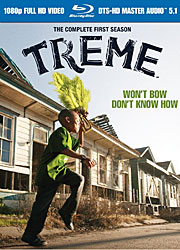First Season
- Drama
- 2010
- Buy the Blu-ray
All photos © HBO
Reviewed by Ross Ruediger
()
et’s talk about not only the most important TV series you’re not watching, but also the most entertaining and rewarding. It’s called “Treme,” (pronounced Truh-MAY) and its first season aired on HBO last year, but hardly anybody tuned in, including, it must be admitted, the writer of this piece. Well, I did watch the first three episodes, and while I liked the idea of “Treme,” something about it didn’t quite grab me enough to keep me tuning in. Once I was blind and now I can see.
“Treme,” from David Simon and Eric Overmyer (who previously worked with Simon on “The Wire” and “Homicide: Life on the Street”), deals with the city of New Orleans three months after Katrina. It’s about how various citizens attempt, against the odds, to reclaim their home and start again. If that sounds at all dreary, let me tell you, it most certainly is not. Here’s a series that’s filled with equal amounts of joy and heartbreak. A character may experience a profound sense of despair, only to turn around and learn how to live again. The aftermath of the hurricane and the subsequent flooding of the city is merely a backdrop to draw rich, layered characters that quickly begin to feel like neighbors you know and love.
In many ways it reminds me of the rich tapestry Armistead Maupin accomplished with his “Tales of the City” series back in the 70s and 80s, only that was through prose (although eventually miniseries were made from his first three books). Maupin’s “Tales” have become integral reading for those who live in San Francisco, and in time the denizens of New Orleans will feel the same about “Treme,” assuming they don’t already.
There is no hard central character in “Treme,” although Antoine Batiste (Wendell Pierce) comes the closest. He’s a career trombonist with a flawed moral code when it comes to the ladies, but somehow we forgive him that, probably because we know what he’s been through in recent months, or maybe simply because he’s a passionate artist, and that’s what artists tend to get up to. His ex-wife LaDonna (Khandi Alexander) is still searching for her brother Daymo, who’s been missing since the flood. Aiding her in her quest is Toni Bernette (Melissa Leo), a tough lawyer who often comes to the rescue of those in need. Toni’s married to Creighton (John Goodman), a professor and writer who serves as the outraged voice of the city, particularly after his rants become a YouTube sensation. Goodman has had many fine roles in his long career, but Creighton is destined to go in the Top Five. He’s got all the anger of Walter Sobchak, only he’s also got intelligence to back it up.
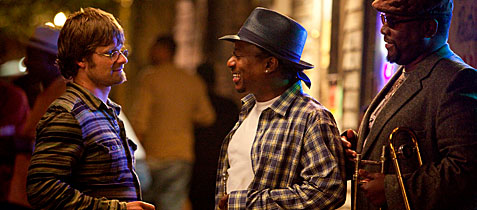
Janette Desautel (Kim Dickens) owns a restaurant, but is having enormous difficulty keeping it afloat, as the insurance money isn’t coming in. She has an on-again, off-again relationship with local DJ and all-around slacker Davis McAlary (Steve Zahn), who’s probably the most amusing character in the “Treme” weave; a court jester who keeps the good times coming. Probably the most heartfelt story, though, is that of Albert Lambreaux (Clarke Peters), a Mardi Gras Indian chief, who lost everything (and I do mean everything) in the flood, but is determined to get it all back. There are many, many other folks in this series that you’ll come to care about; this is a mere sampling.
Frequently, I hear people complain about a perceived phoniness in the show “Glee.” Usually the anger stems from the music. After watching “Treme,” I say fair enough. You may be right. But if you’re not watching and telling people about “Treme,” then you are part of the “Glee” problem, because there is no series on TV right now that offers up a tighter, rawer and more vivid portrayal of musicians and their craft. Stop bitching about “Glee” and start talking up “Treme.” Every episode is crammed wall to wall with musical performances, often from famous folks. Dr. John, Allen Toussaint, Steve Earle, the Neville Brothers and John Boutté (who also provides the catchy series theme song) are just a few of them. Hell, even Elvis Costello pops up in the first couple episodes, and Kermit Ruffins plays himself throughout the entire season. Earlier, I said there was no hard central character in “Treme.” Let me amend that: Music is the central character, because it’s always there, front and center, accompanying viewers on this incredible journey.
At the top of this piece I called “Treme” important, and it is. It’s important because it’s an honest look at one of the greatest cities in America, and how America failed that city. It’s important because if it can happen to New Orleans, then it can happen to your town or city as well. Season One of “Treme” was created before the BP oil spill, yet another incident in which we failed this great city. As Creighton says in one of his many rants, the flooding was not a natural disaster, but a “man-made fucking catastrophe.” Many residents of New Orleans feel this way, and I see no reason to argue with them, mostly because, well, they’re right.
The season is ten episodes. The premiere and the finale each run about 80 minutes or so, while the middle eight all clock in at just under an hour. The second season of “Treme” debuts on HBO on April 24th, so you’ve got a few weeks to play catch up, and I cannot suggest highly enough that you do just that.
Special Features: There are five audio commentary tracks, featuring Simon, Overmyer, Pierce, Alexander, Goodman, executive producer Nine Kostroff Noble, producer/director Anthony Hemingway, writer George Pelecanos and TV critic and all-around Simon fanatic Alan Sepinwall. Additionally, there are partial music commentaries on every episode from WBGO’s Josh Jackson and NPR Music’s Patrick Jarenwattananon. “‘Treme’: Beyond Bourbon Street” and “The Making of ‘Treme’” are fine featurettes that total about 45 minutes. Finally, there are two Blu-ray interactive features called “Down in the ‘Treme’: A Look at the Music and Culture of New Orleans,” which allows you to explore the music, food, locations and so forth through pop-up windows, as well as “The Music of Treme” in which you can learn more about the tunes and artists. After you’re done watching the season, you’ll want to.
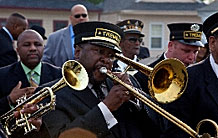 |
 |
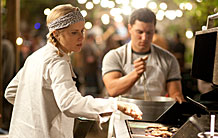 |
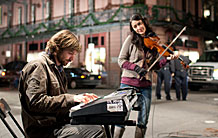 |
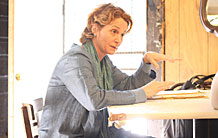 |
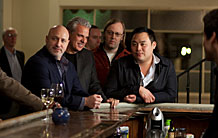 |
You can follow us on Twitter and Facebook for content updates. Also, sign up for our email list for weekly updates and check us out on Google+ as well.













